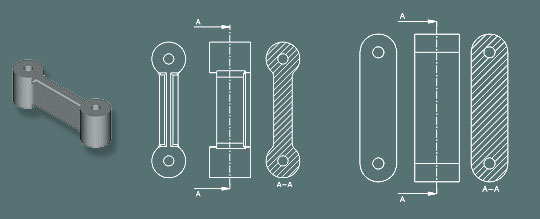
PARMACO Metal Injection Moulding AG
Fischingerstrasse 75
CH-8376 Fischingen
Phone: +41 – 71 – 977 21 41
FAX: +41 – 71 – 977 21 22
Email: info@parmaco.com
Web: www.parmaco.com
Quality management: Certificate (PDF)
Representation in Austria since 2011
Burde & CO GmbH
Phone: +43 – 1 – 4023973 – 0
Email: service@burdeco.com
MIM procedure
- The MIM procedure combines the classic powder metal sintering technology with injection molding technology from plastics technology.
- The finest metal powders are mixed with an organic binder system and processed into an injection-moldable mass.
- Subsequent processing takes place in slightly modified injection molding machines into so-called “green parts” = handleable, dimensionally stable parts, but with low strength; these parts are approximately 18% larger than the finished product.
- After demoulding, the parts are again debound. This takes place in a chemical and a thermal step. Then there is a porous part (“blueing”) with relatively low strength.
- The complete conversion into a body with comparable properties of a metal body machined from solid takes place in the final sintering process at temperatures close to the melting point. The diffusion processes that take place lead to a dense metallic body. The associated loss of volume is significantly higher than in plastics processing and is taken into account accordingly in the design.
- In many cases, the parts produced in this way do not require any post-processing. If necessary, all conventional methods can be used (grinding, drilling, coating, electroplating, hardening, etc.).
Applications
- Automotive industry
- Medical technology
- Connection technology
- Precision engineering industry
- Military technology
- Power tools
- Lock technology
- Telecommunications
Advantages
- Production of complex geometries (holes, undercuts, gears, grooves)
- Manufacture of thin-walled components
- very high dimensional accuracy
- high temperature resistance
MIM – classic puller metallurgy
- higher density
- better mechanical properties
- Possibility of complex geometries
MIM – fine casting
- usually no post-processing
- better tolerances
- Production of complex geometries
MIM - fair construction
- wall thickness as uniform as possible
- avoid wall thickness jumps
- radii at transitions
- straight bearing surfaces for sintering

Materials
Alloyed steels
| Material | Nr. | Steel type | Composition (wt%) | |||||
| C | Si | Ni | Cr | Fe | Other | |||
| S 6-5-2 | 1.3343 | high speed steel | 0.95 – 1.10 | <0.45 | – | 3.80 – 4.50 | bal. | W, Mo, V |
| AISI 4340 | 1.6565 | tempered steel | 0.38-0.44 | <0.35 | 1.65-2.00 | 0.7-0.9 | bal. | Mo, Mn |
Properties (sintered)
| Material | Nr. | sintered density [g/cm3] |
Rp0.2 [MPa] |
Rm [MPa] |
A [%] |
hardness |
| S 6-5-2 | 1.3343 | 8.0 | ||||
| AISI 4340 | 1.6565 | 7.4 | >500 | >900 | ca. 9 | ca. 150 HV1 |
Steels stainless
| Material |
Nr. |
Steel type | Composition (wt%) | |||||
| C | Si | Ni | Cr | Fe |
Other |
|||
| AISI 17/4 PH |
1.4542 |
precipitation hardening steel |
<0.03 | <1.00 | 3.0 – 5.0 | 15.5-17.5 | bal. |
Cu, Nb+Ta |
| AISI 316L |
1.4404 |
Stainless steel | <0.03 | <1.00 | 10.0 – 14.0 | 16.0-18.0 | bal. |
Cu,Nb |
Properties (sintered):
| Material |
Nr. |
sintered density [g/cm3] | Rp0.2 [MPa] |
Rm [MPa] |
A [%] |
hardness |
| ISI 17/4 PH |
1.4542 |
>7.6 (>97.5%) | ca. 700 | ca. 820 | ca. 10 |
ca. 300 HV10 |
| AISI 316L |
1.4404 |
>7.6 (>97.5%) | ca.150 | ca. 480 | ca. 55 |
ca. 120 HV1 |
FeNi alloys
| Material |
Nr. |
Steel type | Composition (wt%) | |||||
| C | Si | Ni | Cr | Fe |
Other |
|||
| FeNi2 |
– |
sintered steel | <0.01 | <0.20 | 2 | – | bal. |
– |
| FeNi7 |
– |
sintered steel | <0.01 | <0.20 | 7 | – | bal. |
– |
| FeNi36 |
1.3912 |
sintered steel | 0.01 | <0.20 | 36 | – | bal. |
– |
| FeNi42 |
1.3917 |
sintered steel | 0.01 | <0.20 | 42 | – | bal. |
– |
| F15 |
1.3981 |
sintered steel | 0.01 | <0.20 | 31 | – | bal. |
15% Co |
Properties (sintered):
| Material |
Nr. |
sintered density [g/cm3] |
Rp0.2 [MPa] |
Rm [MPa] |
A [%] |
hardness |
| FeNi2 |
– |
>7.8 (>98%) | 200 | 350 | ca. 26 |
ca. 150 HV1 |
| FeNi7 |
– |
>7.8 (>98%) | 290 | 430 | ca. 26 |
ca. 150 HV1 |
| FeNi36 |
1.3912 |
>7.8 (>98%) | 310 | 480 | ca. 30 |
ca. 140 HV1 |
| FeNi42 |
1.3917 |
>7.8 (>98%) | 300 | 500 | ca. 30 |
ca. 140 HV1 |
| F15 |
1.3981 |
>7.9(>98%) | 380 | 540 | ca. 30 |
ca. 160 HV1 |
